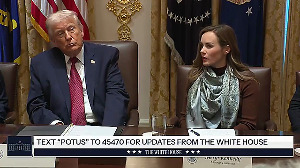After a week of sun and sand, New Year revelry and resolutions, it felt strangely good to come back to the reality of the markets. Detachment does not last for long!
The first thing I noticed was that commodity prices were down. International commodity prices are measured by the Reuters-Jefferies CRB Commodity Price Index, which had peaked just above 360 last May, when oil touched $78.
After dropping below 300 in the second half of last year, the index found an interim high around 320 and remained there through the last quarter. As I write, it has fallen sharply to 290.
Since I have been bearish on crude oil for a while, it was great to see prices at an 18-month low of $55. As a result, BPCL, which I hold, is at Rs 350 - a good 10 per cent above the recent low of Rs 320.
If oil prices keep heading south, as I believe they will, oil marketing companies will get re-rated. The other sector that will get support from dropping oil prices is auto, but I am more cautious here. Virtually every major international auto company is now competing for a share in the Indian market, Renault being the latest entrant. Till a clear leader emerges, margins will suffer hugely.
Wheat, too, is softer - a few months ago, when Chicago futures for wheat reached $5.40 a bushel, traders were calling a 2007 high of $7.50. Chicago wheat is now at $4.70, down 15 per cent. In India, wheat is at Rs 1,090 per quintal, down from its November high of Rs 1,170.
This softening of commodities is, I believe, due to international liquidity contracting after several years of easy money. While Japan actually offered money at zero interest, in the United States, the 'real' interest rate (meaning interest rate minus inflation) was negative, about minus two per cent in 2005. Today, real interest is at about 1.6 per cent and is expected to rise to 2.3 per cent by the end of the year, as inflation slows.
In India, inflation has not yet shown signs of slowing, but I think it will. In any case, interest rates are up. So, it makes sense to put your money in a bank, as real interest rates have gone up from a low of about one per cent to about three per cent. Banks need to offer these high rates to attract deposits.
For the time being, they seem to be able to pass on corresponding increases to their corporate customers. As a result, bankers remain bullish. While I would not challenge them, I find their stocks too expensive. The only bank stock I would look at is Centurion, not because it is cheap, but because I see it growing aggressively via mergers and joint ventures.
The increased cost of money may not have a huge impact on our economy, but it should gradually drive out some of the speculative elements - just as higher borrowing costs have eased international speculators out of commodity markets. In India, the greatest impact is likely to be on housing.
The shortage of dwellings is a reality, but higher EMIs reduce the affordability of housing, and in a country where many young adults live with their parents, the decision to move out can always be postponed. As a result, I am cautious about real estate stocks.
So, as I look into 2007, where should I put my money? Selectively into FMCG stocks where I see margins improving as inflationary pressures ease. And, also into second tier IT stocks. There are a host of such companies with steady profit margins - some we have mentioned earlier, such as NIIT Ltd, KPIT Cummins and Aztecsoft - and they have performed well. This sector may see some consolidation at healthy valuations, which would be attractive for the shareholder.
Expect more specific picks - in these and other sectors - through 2007. Happy investing!;
The author is an investment advisor to a select group of clients.





